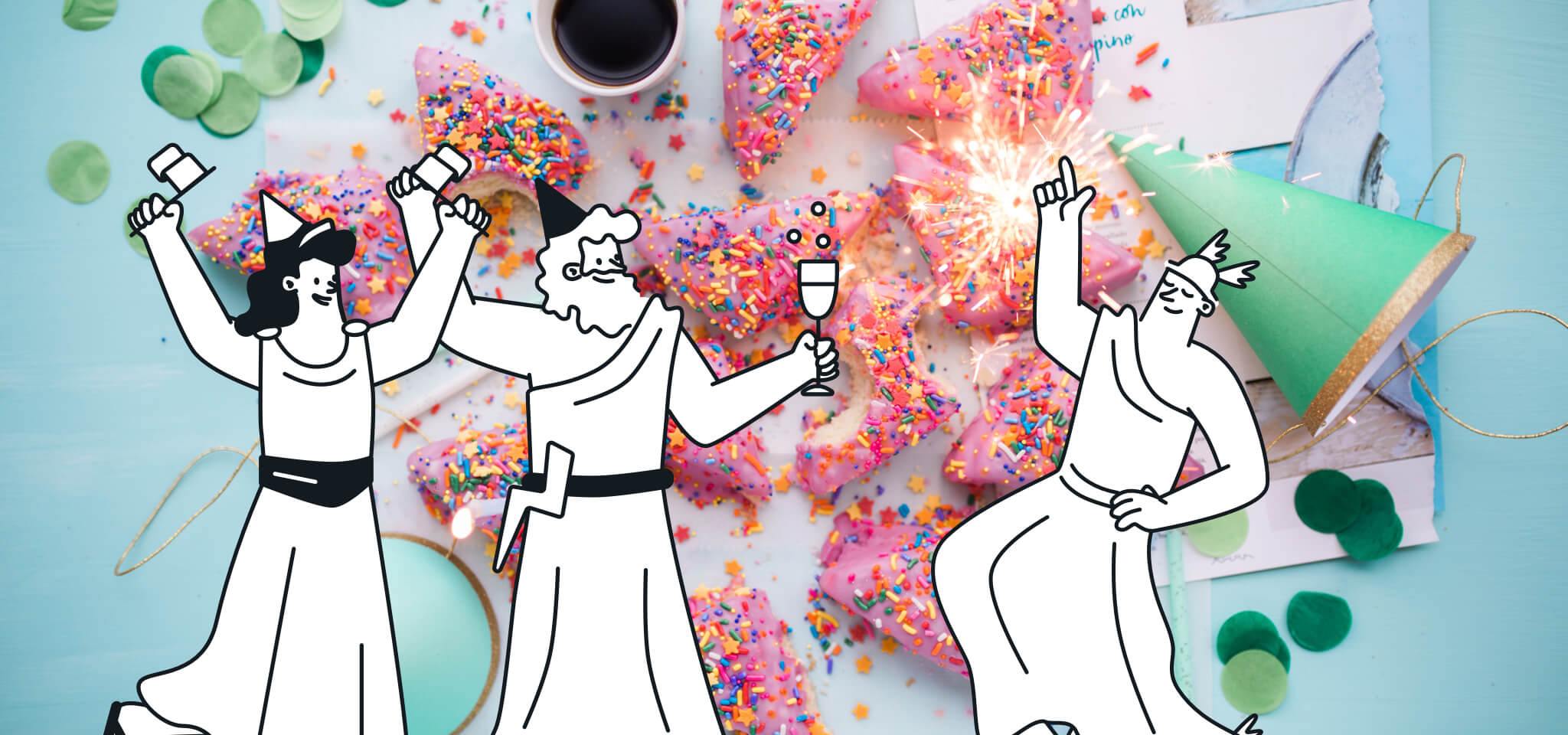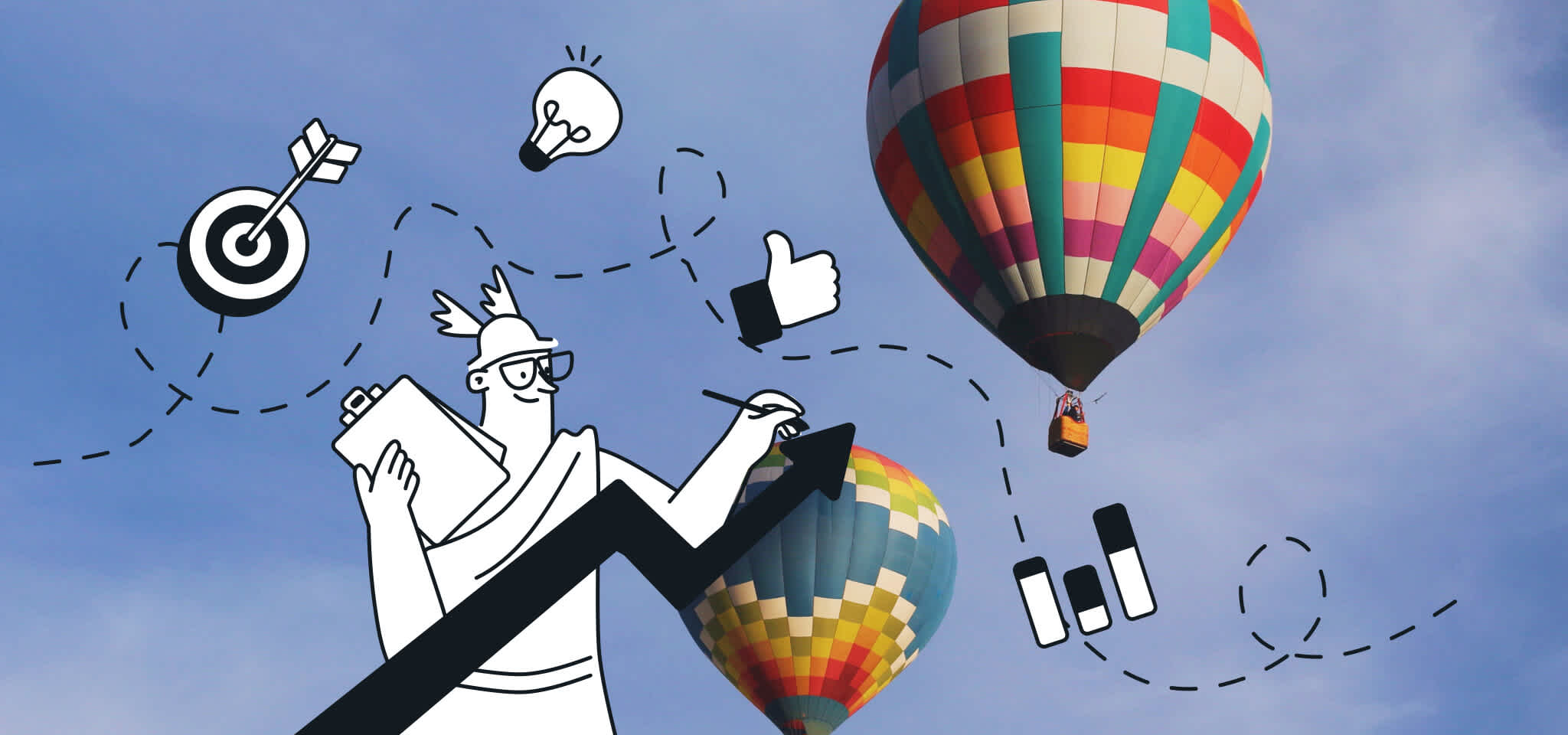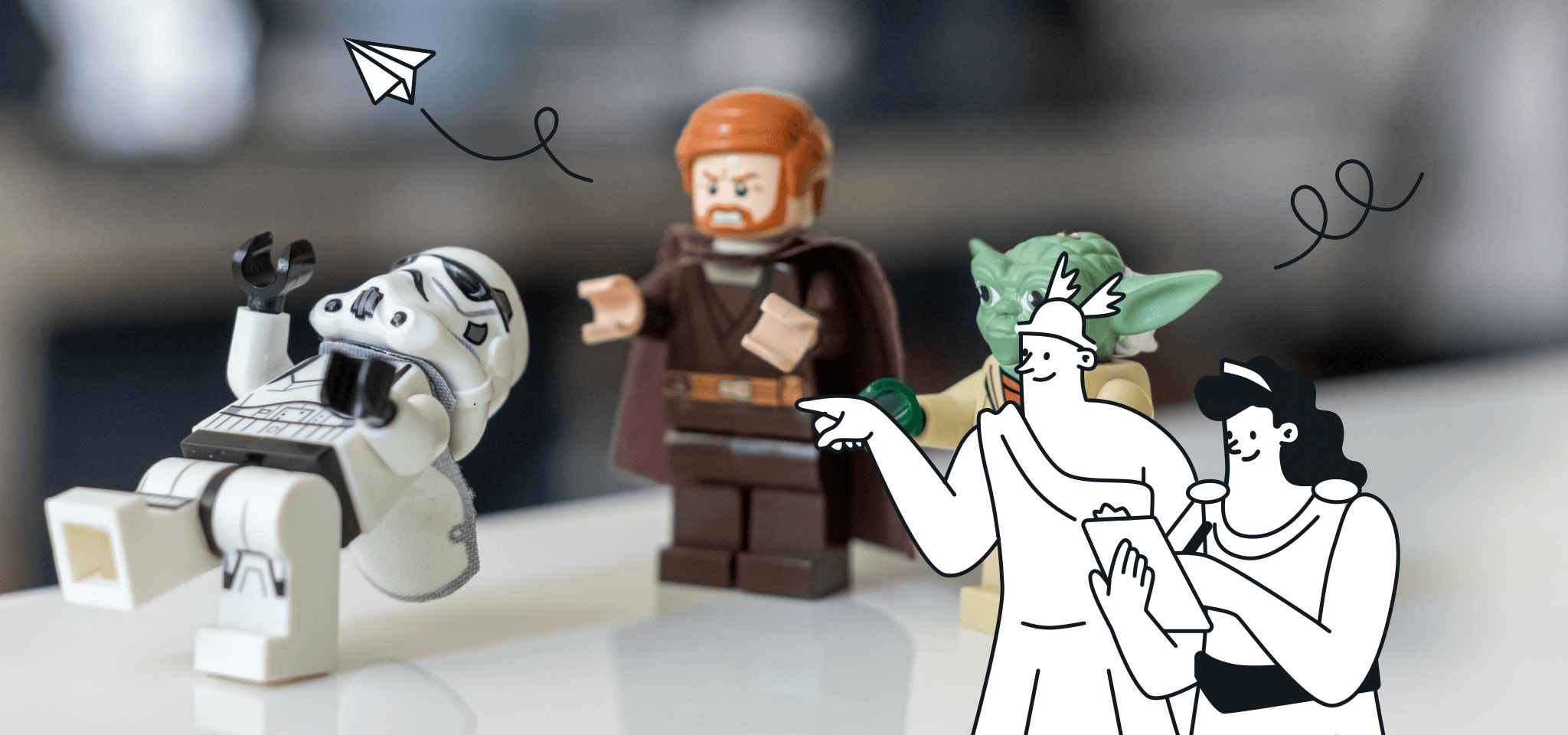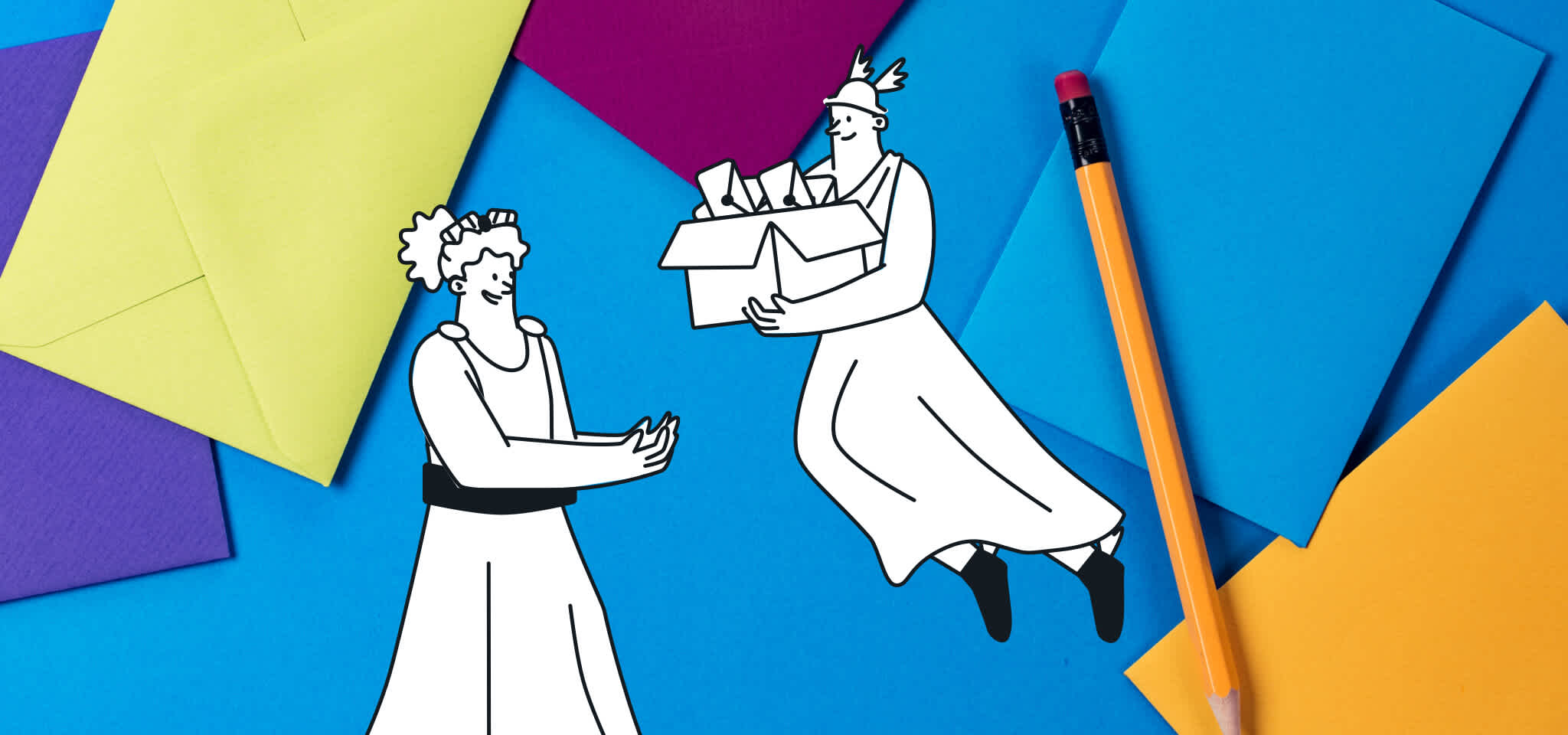Marketing
Storytelling in marketing: Make your customer the hero [Infographic]
Good stories make for better marketing. Discover some of the biggest benefits and find out how to place customers and subscribers at the center of the action. Check out our infographic and get advice for using storytelling in email marketing campaigns.

PUBLISHED ON
Most of us already know that there are some major benefits to using storytelling in marketing. However, we’ve all heard some really good stories as well as stories that bore us to death.
So, what are the secret ingredients for a powerful and persuasive marketing story that resonates with your customers and prospects?
In our free ebook, “The omnichannel hero’s journey”, we explore a timeless storytelling framework that is used throughout history and in cultures around the world. It’s known as the hero’s journey, and it could be the key to creating a more compelling customer communication experience.
But first, why should you care about using stories in your marketing strategy?
Table of contents
1. Brand recall
2. Persuasion
3. Costumer connection
4. Authenticity
5. SEO and social media
The hero’s journey explained
1. Apple’s 1984 TV commercial
2. Patagonia’s blog
3. Square’s video marketing
4. Lego: Look what I built
5. Salesforce: Trailhead resources
1. Welcome emails
2. Onboarding emails
3. Email newsletters
4. Order confirmation/shipping emails
5. Win-back and reactivation emails
Why storytelling in marketing is important
The use of storytelling is one of those things that seems to separate humans from the rest of life on planet earth. We know that prehistoric people told stories because we can see them in ancient cave paintings. In fact, a 44,000-year-old cave painting found in Indonesia is thought to be the oldest example of storytelling.
In marketing, a good story can accomplish a lot. Here are just a few benefits of storytelling in marketing:
1. Brand recall
Stories help us remember things, including the brand that told the story. Effective storytelling in marketing helps messaging stick with people long after they see an advertisement, read a blog post, open an email, or watch a video.
There’s research behind this too. A 2015 study found storytelling leads to higher levels of brand recall.
Think about your favorite Super Bowl commercials. They made you laugh, inspired you, or brought a tear to your eye because they told stories. And most people remember those ads long after they forget the score of the game.
2. Persuasion
A well-told story is extremely convincing. If you’re not sold on that fact, then ask yourself why the U.S Department of Defense conducts advanced research into the impact of storytelling. Politicians and world leaders have used storytelling to persuade entire populations (sometimes for good and other times for evil).
If a story can do that, it should have no problem persuading a prospect to make a purchase or subscribe to a newsletter.
Your job as a marketer is to convince people to take specific actions: click a CTA, download a PDF, make a purchase, etc. Storytelling in marketing helps you get the job done.
3. Costumer connection
Marketing that moves people is directly connected to emotions, and nothing generates emotion like a good story. That’s why successful marketers think about a prospect’s pain points, motivations, and aspirations. Those factors are all very emotional.
Researchers from Harvard found that the payoff for making an emotional connection is even more important than customer satisfaction. Separately, Harvard Business School professor Gerald Zaltman has stated that 95% of purchase decisions take place in our subconscious minds. And emotions are believed to be messages from the subconscious.
Charities and non-profits also use storytelling for persuasion and creating an emotional connection while drawing attention to their causes. The Greenpeace International video below is a great example.
Put simply, people choose to work with businesses, support charities, and buy from brands that they feel connected with. Stories build connections that make you trustworthy and relatable in the minds of customers.
4. Authenticity
Not only can storytelling in marketing make your brand more relatable, but stories also make you more believable.
There’s too much marketing that boasts about features and benefits without any proof behind those braggadocios statements. A story makes it real, especially when it’s true, like with good customer case studies.
Authentic storytelling in marketing means cutting the jargon, eliminating the B.S., and showing empathy for your customers and prospects. An authentic story shows you understand exactly what your customers are going through.
5. SEO and social media
Want to get more social media shares? Could you use a few more high-quality backlinks to boost your search engine visibility? Try telling an amazing story.
When you hear a good story, the first thing you want to do is tell it to someone else. Stories are designed to be shared. Hitting the “Share” button or linking to a good story is the main way we pass stories along in the digital age.
Digital marketers can talk for days about their tips and tricks for boosting social engagement and how to optimize content for search. But it’s no big secret. Stories really work.
Need proof? Check out an article from the search marketing experts at Yoast about why storytelling is good for SEO. And find out what the folks at Socialbakers have to say about storytelling and social media engagement.
Making your customer the hero
Let’s be honest, you could throw a story into your next marketing project, and it will still fall flat. That’s because any old story won’t do. You must tell stories that put your customer at the center of the action.
Think about how you feel when you’re stuck listening to someone who can’t stop talking about themself. Your potential customers might feel the same way.
A good marketing story makes your customer the hero, not your brand. And stories about heroes are among the most powerful tales you can tell.
Legendary literary professor Joseph Campbell is credited with uncovering a storytelling formula known as the hero’s journey. In his research, Campbell noticed that the same type of story emerged across time and place. The hero’s journey can be found in Greek mythology, Native American legends, and J.R.R. Tolkien novels as well as pretty much every Marvel movie and Pixar film.
The hero’s journey explained
The hero’s journey follows a main character who is called to leave home and go on an adventure. On the journey, they encounter a series of challenges, making friends and fighting foes. Finally, they achieve their mission or reward and return home.
That sort of storyline may sound simple because it’s so familiar. But that simplicity and familiarity is exactly what makes the hero’s journey such a powerful storytelling tool.
There are a variety of ways to explain the hero’s journey. In our ebook, “The omnichannel hero’s journey��”, we broke it down into the following 10 steps:
Ordinary world: The hero at home in their comfort zone.
Call to adventure: The hero is called to go on a quest.
Refusal of the call: The hero initially denies the call.
Crossing the threshold: The hero enters into the unknown world.
Meeting the mentor: The hero encounters an older, wiser character who acts as a guide.
Friends, foes, and allies: The hero meets a cast of other characters, both good and bad.
Moment of despair: The hero faces a major loss that threatens the entire journey.
The ordeal: The hero takes on the biggest challenge yet and emerges victorious.
The reward: The hero finds what they’ve been seeking.
The return: The triumphant hero goes back home. But the journey has changed them.
You can think about how to apply this outline to the stories you tell your customers and prospects. However, you should also consider the internal stories you’re telling yourself about your customers.
The hero’s journey and the customer journey
One of the ways marketers imagine the experience of potential buyers is through persona development and customer journey mapping.
What you’ll find is that there are some very interesting parallels between the customer journey and the hero’s journey. Check out our infographic below to see what we mean.

Click to view a larger graphic
Examples of storytelling in marketing
Elements of storytelling can be found in some of the most successful advertising and marketing campaigns of all time. Here are five recognizable examples of storytelling in marketing in which brands make customers the heroes and use the hero’s journey framework.
1. Apple’s 1984 TV commercial
Nearly 40 years ago, Apple found a way to pack a hero’s journey story into a 60-second TV spot. The brand’s 1984 Super Bowl commercial has become an advertising icon.
It starts in a strange Draconian world in which zombie-like humans listen obediently to a leader figure on a large screen. It’s a scene reminiscent of George Orwell’s novel, “1984.” The hero, a young woman in a track outfit, is being chased by men in riot gear. She throws a sledgehammer into the screen, and it explodes. The voiceover announces the arrival of the Macintosh computer.
Even though you’re watching what’s likely the final battle of a hero’s journey, your mind still fills in other parts of the story so that it all makes sense. Didn’t it? You know who the hero is. You can feel what’s at stake. You realize this is the big moment. Then Apple tells you what’s about to change.
With just a handful of images and words, Apple told a story about breaking free from the monotony of computing and becoming a more colorful and creative individual. Almost 40 years later, that is still Apple’s core marketing message.
2. Patagonia’s blog
The outdoor gear and clothing brand, Patagonia, does an amazing job making the customer the hero in original articles on its website. Check out The Cleanest Line, which features the true stories of real people doing incredible things for the environment and just for thrills.
The tagline of this blog, “Stories to get you out there,” serves as a call to adventure for readers.
These aren’t case studies. They don’t actively sell any particular product. Instead, you’ll read about an organic farmer’s fight against “forever chemicals,” a group of friends’ mountain-climbing adventures, efforts to clean up Chile’s coastline, and participants in a sport that combines trail-running and fly fishing.

Screenshot of a Patagonia story on environmental activism
The articles rarely (if ever) mention the Patagonia brand or what the brand sells. Readers might see photos of people wearing the merchandise. However, the real marketing benefit is the emotional connection these stories create. It reminds the customer that “people like me wear clothes like that from brands like this.”
3. Square’s video marketing
Videos represent an excellent opportunity for storytelling. Square uses that opportunity to tell stories about small business owners and entrepreneurs in its film series, For Every Kind of Dream.
Lots of good stories start with someone setting out to accomplish a dream. In this marketing effort, Square doesn’t tell you how its card reader enables local businesses to make money and thrive. Its videos show you the people who’ve overcome challenges to make their dream a reality. They’re the real heroes.
Check out the film about how local business owners in Flint, Michigan stepped up to support their city after it fell on especially hard times.
Besides thinking about what your brand does and what it sells, think about what it helps your customers accomplish. Tell stories about that.
4. Lego: Look what I built
Back in the early 1980s, Lego launched a print campaign featuring pictures of cute kids and their original Lego brick creations. The ads are for parents, not kids. But the campaign made children the heroes. The real hero’s journey at the heart of this marketing story is about the challenge of raising an imaginative, independent kid. But the journey continued...

1981 Lego ad campaign
Lego updated this concept with its “Never Stop Playing” campaign. It features photos and videos of Lego enthusiasts as youngsters and adults. The brand brings the story full-circle, showing how playing with Lego bricks influenced their customers’ lives and careers.
5. Salesforce: Trailhead resources
In our article about lifecycle marketing, Chelsea Mellonas told us about the importance of the onboarding experience in many B2B customer journeys. One way that brands can act as mentors and allies to their heroes (aka customers) is through educational content and training resources.
Salesforce does a great job at this in its resource center, Trailhead, which invites users to “skill up for the future.” The brand’s marketing team knows that the more people who are experts at using Salesforce, the more businesses will choose to use the platform.
Trailhead’s main page lays out the potential reward attained from going on an adventure to gain Salesforce expertise. Even the name “Trailhead” sounds like the start of a journey. The page goes on to highlight different careers its users can pursue if they answer the call to adventure and choose a path.

Salesforce highlights the hero’s “reward”
Storytelling in email marketing
Email marketing represents a unique way to use storytelling in connection with a customer journey.
That’s because email is the best channel for delivering the right message to the right person at the right time. The right message has to do with the story you tell. The right person is the customer or prospect who should be the hero of that story. And the right time represents a specific point in the customer journey when people need to hear from you.
Here’s how you can use a storytelling mindset to improve campaign performance in some common types of emails:
1. Welcome emails
It’s easy to fill welcome emails with stories about your brand. However, that first email you send to a new subscriber or customer represents the start of their journey with your brand. They are entering your world.
The welcome email is your chance to establish a trustworthy connection from the start. Will your brand (and your emails) be like a trusty companion who has their back? Or will you annoy them and bog them down with irrelevant messages?
Many hero’s journey stories start with a message. Think of Harry Potter’s invitation to Hogwarts or the holographic message from Princess Leia asking for help in Star Wars. A well-crafted welcome email can serve as a call to adventure too.
2. Onboarding emails
Every hero’s journey comes with a bunch of trials that test the hero’s strength and will. For your customers, that could include overcoming the challenge of learning to get what they need out of what you offer.
Convincing someone to sign up for a trial or buy something isn’t always the end of the journey. More often, a purchase places customers right in the middle of the adventure.
Onboarding emails point your hero in the right direction so they can find the information they need when they need it most. Your brand is playing the role of the wise mentor to the hero in these messages. So, make onboarding emails helpful and encouraging.
3. Email newsletters
Of course, newsletters are one of the best ways to deliver stories to subscribers. But they can do more than that. Branded email newsletters are an excellent way to support and guide customers.
Think of each piece of content in your email newsletters as a clue or a tool that will serve your customer on their journey. It’s almost like you’re Q from the James Bond films, showing the different gadgets and secret weapons that will help 007 with his spy mission.
4. Order confirmation/shipping emails
In some cases, a decision to purchase from your company does reflect the end of a customer’s journey. In that case, your product may represent the reward your heroes are seeking.
For example, finding a new car, dream home, or the perfect wedding dress represents a successful journey for people who’ve been going on test drives, visiting open houses, and trying on gowns.
Order confirmations and shipping emails contain important details about a purchase. However, they can also be an opportunity to thank customers and congratulate them on completing their journey. Plus, you’re also staving off buyer’s remorse and assuring them they made the right choice.
Then, when you send them an upsell email or make personalized product recommendations, they’ll be willing and ready to go on another journey with your brand.
5. Win-back and reactivation emails
There’s a part of the hero’s journey known as “Refusal of the call,” in which the main character first turns down the call to go on the adventure. There’s also the “Moment of despair” during which the hero often contemplates giving up.
Your customers and prospects may have moments like this too. But the right email marketing message can keep them from quitting... because every hero deserves a second chance at completing their journey.
Reactivation emails work to make dormant customers and subscribers interested in engaging with your brand again. Win-back emails can be used to remind subscribers why they turned to you in the first place.
What’s your customer’s story?
This only scratches the surface of the power that storytelling can have in marketing and communication. And storytelling isn’t just for email either.
Stories work across all sorts of channels, with all types of industries, and every kind of customer. But stories are most effective when they are consistent and based on the customer journey. So, how can you create a customer communication experience that resonates with your audience?
Get Mailjet’s ebook “The omnichannel hero’s journey” to uncover more secrets and discover more.








